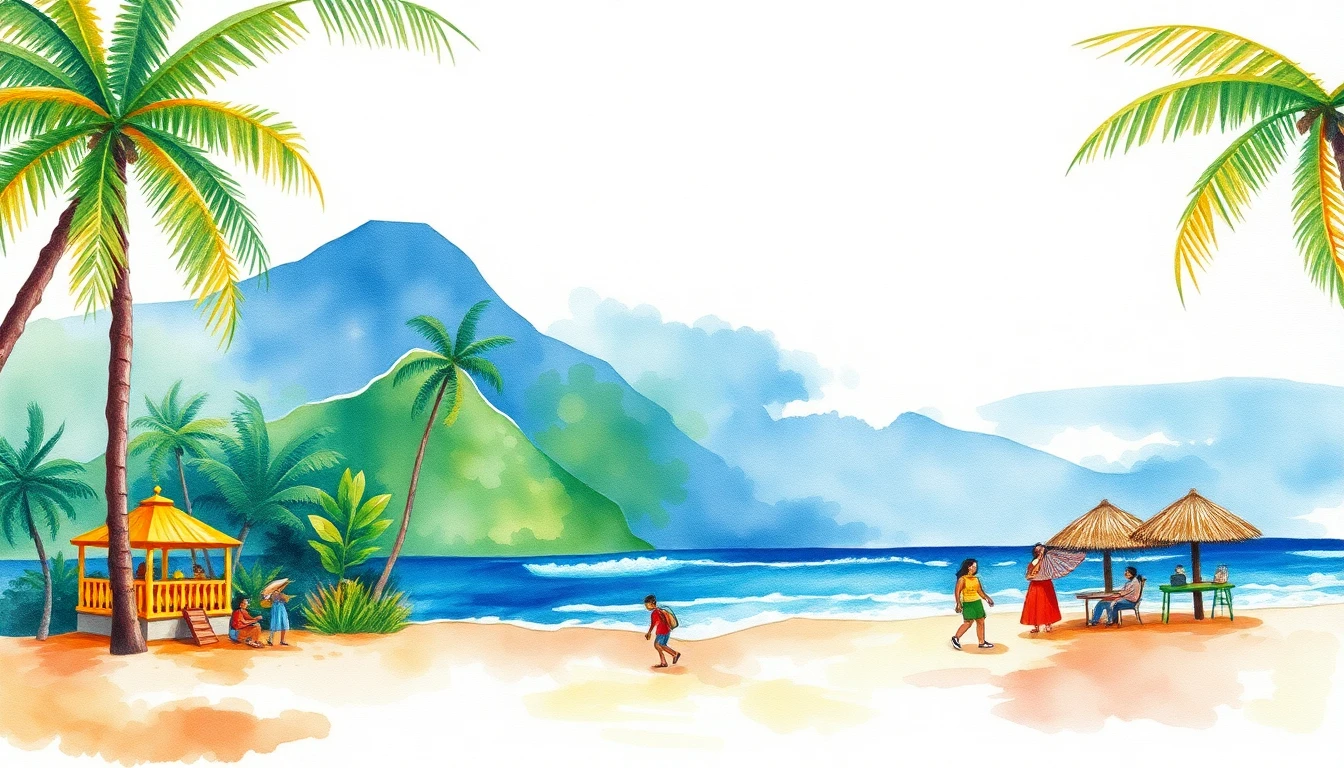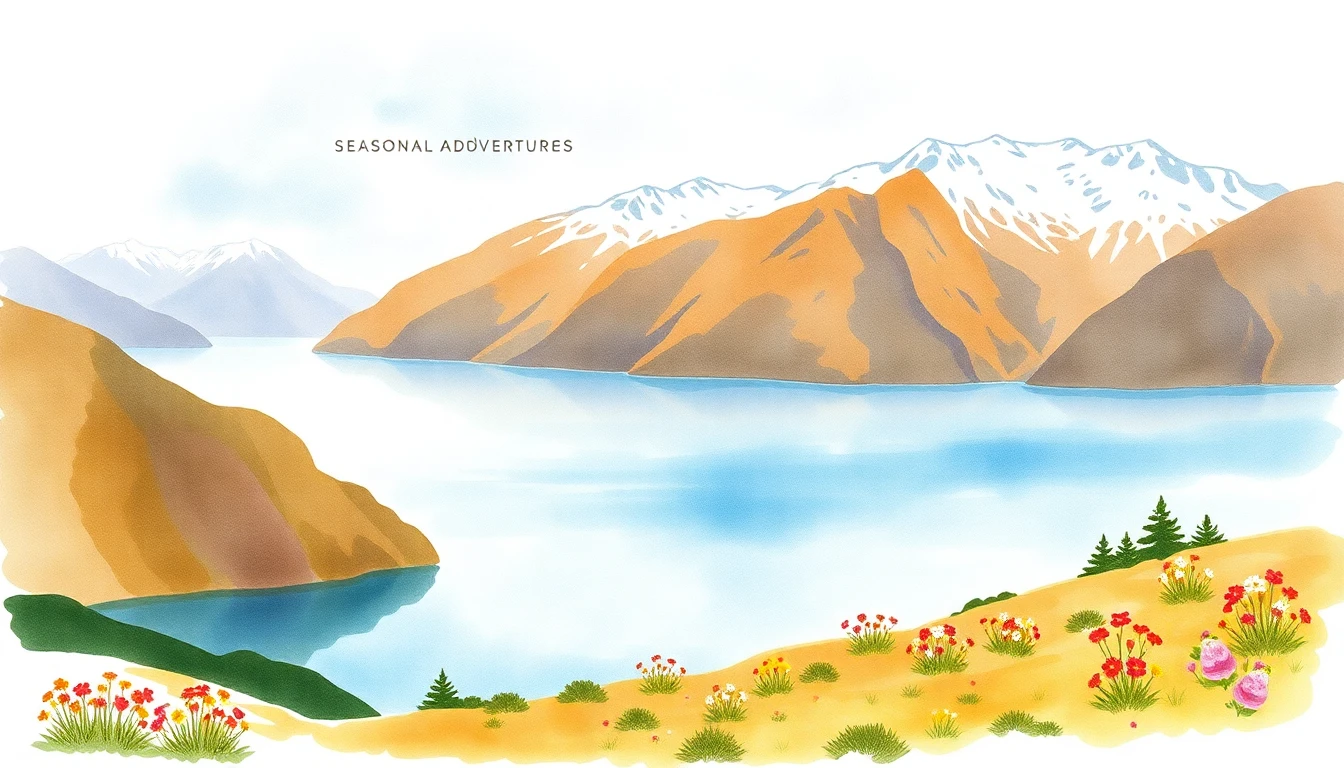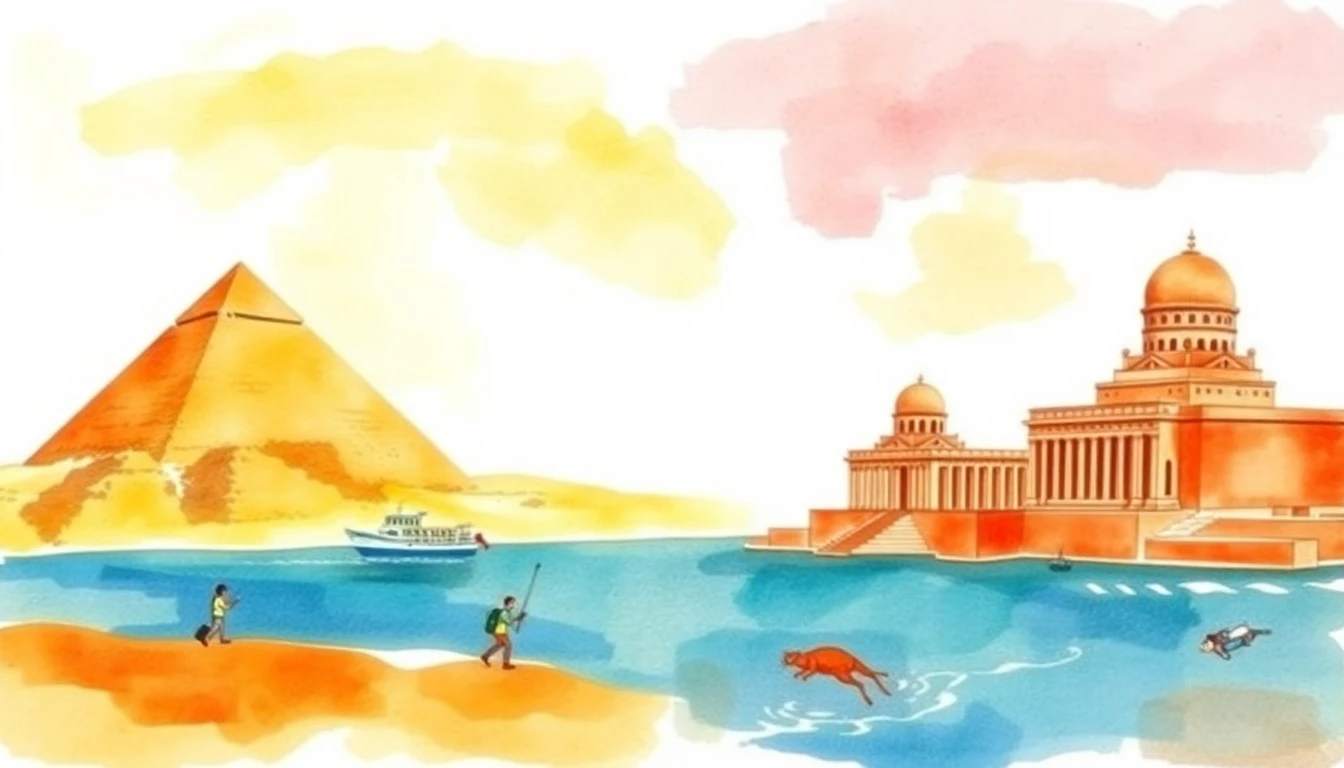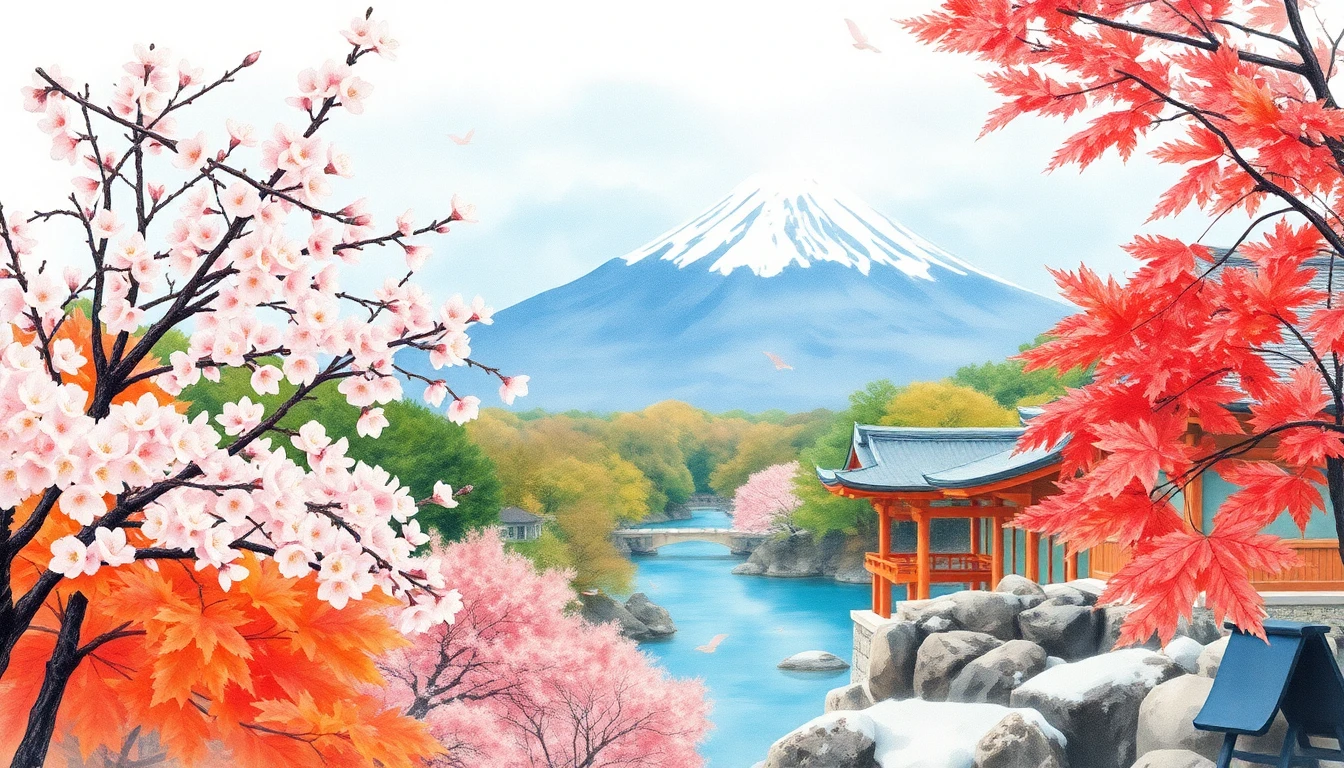Best Time to Visit Peru 2025: Complete Season Guide
⚡ Quick Answer
The best time to visit Peru is during May to September for dry weather and highland trekking, perfect for Machu Picchu and Inca Trail adventures. Visit December to March for coastal warmth and fewer crowds, though expect Amazon flooding and highland rains.
There's something almost mystical about watching the sunrise illuminate Machu Picchu's ancient terraces, or standing in the mist-shrouded cloud forests of the Amazon as howler monkeys announce the dawn. Peru doesn't just span altitudes from sea level to over 22,000 feet – it encompasses entire worlds of experience, from the arid Nazca Desert to the lush rainforests of Manu, creating seasonal patterns that can make or break your journey.
I've been exploring Peru's diverse landscapes for over fifteen years, from tracking jaguars in the flooded Amazon during the wet season to crossing snow-dusted Andean passes in the dry months. Each season reveals different facets of this extraordinary country – the Peru you'll discover during the lush green rainy season bears little resemblance to the stark, crystalline beauty of the dry highlands, and that's precisely what makes timing your visit so crucial.
This guide distills years of seasonal exploration across Peru's three distinct regions, countless conversations with local guides from Cusco to Iquitos, and yes, some perfectly timed (and poorly timed) adventures. Whether you're dreaming of the classic Inca Trail to Machu Picchu, seeking wildlife encounters in Manu National Park, or planning to explore the colonial charm of Lima and Arequipa, understanding Peru's complex seasonal patterns will transform your journey from memorable to absolutely extraordinary. For official tourism information and travel planning, visit Peru's official tourism website.
Understanding Peru's Three Worlds
Peru's dramatic geography creates three distinct climatic zones that operate on almost entirely different seasonal calendars. The costa (coast) enjoys a desert climate with virtually no rainfall, the sierra (highlands) experiences pronounced wet and dry seasons, while the selva (jungle) maintains tropical conditions with varying flood cycles. This diversity means you can experience completely different weather patterns within a single day of travel.
The coastal desert, home to Lima and extending from Ecuador to Chile, remains remarkably consistent year-round. The Humboldt Current keeps temperatures moderate while the Andes block moisture from the Amazon, creating one of the world's driest deserts. Meanwhile, just hours inland, the Andes create their own weather systems – the western slopes remain arid, while the eastern flanks catch Amazon moisture, supporting cloud forests and eventually giving way to tropical rainforest.
This geographic complexity means that optimal travel timing varies dramatically depending on your priorities. Coastal Peru enjoys its warmest months during the southern hemisphere summer (December-March), while the same period brings heavy rains to the highlands and Amazon flooding. Understanding these patterns allows you to chase ideal conditions across the country or plan a itinerary that works with seasonal variations rather than against them.
Peru by Season
Each season in Peru offers dramatically different experiences across its diverse landscapes. From highland trekking to Amazon wildlife, from coastal warmth to Andean festivals, here's everything you need to know about Peru's distinct seasons.
☀️ Dry Season (May - September)
Peak Trekking • Clear Skies • Tourist Season
🌡️ Weather
Highlands: 15-20°C (59-68°F) days, 0-5°C (32-41°F) nights • Coast: 18-22°C (64-72°F) • Amazon: Less rain, lower rivers
🏆 Highlights
- • Perfect Machu Picchu conditions
- • All trekking routes open
- • Clear mountain views
- • Amazon wildlife concentrated
- • Stable weather patterns
⚠️ Considerations
- • Higher prices (50-100% increase)
- • Crowds at major sites
- • Book Inca Trail 6 months ahead
- • Cold highland nights
🌧️ Wet Season (October - April)
Lush Landscapes • Fewer Crowds • Lower Prices
🌡️ Weather
Highlands: 12-18°C (54-64°F) with afternoon rains • Coast: 25-30°C (77-86°F) summer • Amazon: Flooding season
🏆 Highlights
- • Coast at its warmest
- • Dramatic cloud formations
- • Green, photogenic landscapes
- • Amazon canopy access by boat
- • Authentic cultural experiences
⚠️ Considerations
- • Inca Trail closed in February
- • Afternoon highland rains
- • Some roads may close
- • Limited mountain visibility
🍂 Shoulder Seasons (Apr & Oct-Nov)
Best Value • Good Weather • Moderate Crowds
🌡️ Weather
April: Rains ending, still green • October-November: Dry season starting, clearer skies
🏆 Highlights
- • Excellent trekking conditions
- • Moderate prices
- • Good weather, fewer crowds
- • Transitional beauty
- • Flexible booking
⚠️ Considerations
- • Weather can be unpredictable
- • Some seasonal closures
- • Pack for all conditions
🗺️ Regional Differences
Coast • Highlands • Amazon
🏖️ Coast (Lima, Paracas)
Summer: Dec-Mar (warm) • Winter: Jun-Sep (cool, foggy)
🏔️ Highlands (Cusco, Machu Picchu)
Dry: May-Sep (ideal) • Wet: Oct-Apr (afternoon rains)
🌴 Amazon (Iquitos, Puerto Maldonado)
High water: Dec-May • Low water: Jun-Nov
Dry Season: Peru's Highland Paradise
The dry season transforms Peru's highlands into a trekker's paradise. Clear, crisp days offer unobstructed views of snow-capped peaks, while stable weather patterns make multi-day adventures not just possible but genuinely enjoyable. This is when the Inca Trail reveals its full glory – ancient stone paths wind through landscapes that shift from lush cloud forest to stark alpine tundra, all under brilliant blue skies that stretch endlessly above.
But the dry season's magic extends beyond trekking. The Amazon enters what locals call the "dry" months, though rain still falls regularly. What changes dramatically is the river level – retreating waters concentrate wildlife around remaining lagoons and expose beaches perfect for camping. Clay licks become accessible, offering spectacular opportunities to observe hundreds of colorful parrots and macaws gathering to consume mineral-rich soil.
The trade-offs are significant. Prices soar during these months, particularly in Cusco and along the Classic Inca Trail, where permits can cost three times their low-season price. Popular sites become genuinely crowded – I've seen lines of hundreds waiting to enter Machu Picchu during peak hours in July. The key is embracing early mornings and accepting that some experiences, like sunrise at Machu Picchu, require arriving in darkness to secure the best spots.
Wet Season: The Emerald Transformation
The wet season reveals Peru's hidden beauty – landscapes that tourists rarely see. The highlands transform into an emerald paradise, with terraced fields glowing green against dramatic cloud-shrouded peaks. This is when Peru's flora explodes into life: orchids bloom in the cloud forests, the Sacred Valley becomes a patchwork of agricultural colors, and the normally arid coastal valleys briefly turn green.
The Amazon becomes truly magical during high water months. Rivers swell to allow boat access deep into forests that remain inaccessible during dry season. You can navigate by canoe through flooded forests, spotting sloths, monkeys, and pink dolphins from canopy level. The fishing improves dramatically, and many jungle lodges offer unique programs taking advantage of the high water access.
Rain in the highlands typically falls in afternoon thunderstorms rather than continuous downpours, leaving mornings clear for activities. I've hiked to Machu Picchu through morning mist that adds mystical beauty to the ruins, then watched afternoon storms roll across the valleys like nature's theater. The challenge lies in flexibility – weather can change rapidly, and backup plans become essential.
Coastal Peru: The Desert's Surprising Seasons
Peru's coast defies expectations with its unique microclimate. The Humboldt Current creates an inverted seasonal pattern – while the highlands shiver through dry season nights, coastal cities like Lima enjoy their coolest, foggiest months. The garúa, a thick marine layer, blankets the coast from May through September, creating moody, gray conditions that locals actually appreciate for the relief from desert heat.
Summer on the coast (December through March) brings warm temperatures and clear skies perfect for exploring beaches, the Ballestas Islands, and coastal archaeological sites like Caral and the Nazca Lines. This is when Limeños flock to beach towns like Máncora and Huacachina Oasis comes alive with sandboarding and sunset viewing. The contrast with highland conditions creates interesting strategic opportunities – you can escape highland rains by heading to the sunny coast.
Month-by-Month Breakdown
May
ExcellentDry season begins • 15-20°C (59-68°F) highlands
May marks the transition from wet to dry season, bringing increasingly stable weather and the opening of peak trekking season. The Inca Trail reopens after February's closure, offering excellent conditions with still-green landscapes from recent rains. Tourist numbers remain moderate, and prices haven't yet reached peak season levels.
May Highlights:
- • Perfect trekking weather begins
- • Corpus Christi celebrations in Cusco
- • Amazon wildlife concentrated
- • Clear mountain views return
- • Moderate prices and crowds
June - August
Peak SeasonPerfect highland weather • 18-22°C (64-72°F) days, 0°C (32°F) nights
These three months represent Peru's absolute peak season, offering virtually guaranteed clear skies, minimal rainfall, and ideal conditions for all highland activities. Inti Raymi (June 24) transforms Cusco into a celebration of Inca heritage, while Independence Day (July 28-29) brings nationwide festivities. August maintains perfect conditions with slightly fewer crowds.
Peak Season Essentials:
- • Book Inca Trail permits 6 months ahead
- • Expect 50-100% higher prices
- • Perfect weather for all activities
- • Maximum crowds at popular sites
- • Cold highland nights require warm gear
September - October
Sweet SpotShoulder season value • Weather still excellent
These shoulder months offer excellent weather with decreasing tourist numbers and more reasonable prices. September maintains dry season conditions, while October sees the first scattered highland showers. Both months provide outstanding trekking conditions and represent arguably the best value for Peru travel.
Shoulder Season Advantages:
- • 20-30% lower prices than peak season
- • Excellent trekking conditions continue
- • Fewer crowds at major attractions
- • Flexibility in planning and booking
- • Spring weather on the coast
November - March
Wet SeasonHighland rains • Coast summer • Amazon flooding
The wet season brings dramatic changes across Peru. Highland rains create lush, green landscapes but can complicate trekking. The coast enjoys its warmest, sunniest weather. The Amazon floods, opening unique wildlife viewing opportunities but closing some trails. February sees the Inca Trail close for maintenance.
Wet Season Strategy:
- • Focus on coastal activities Dec-Mar
- • Choose alternative treks (Salkantay stays open)
- • Amazon river cruises at their best
- • Significant accommodation savings
- • Pack waterproof gear for highlands
Regional Climate Guide
Peru's extreme geographic diversity creates dramatically different climates within relatively short distances. Understanding these regional patterns helps optimize your itinerary timing.
The Coast: Desert Meets Ocean
Peru's 2,400-kilometer coastline experiences one of the world's most unique desert climates. The cold Humboldt Current moderates temperatures while creating the garúa, a persistent fog that blankets coastal cities like Lima from May through September. This creates an inverted seasonal pattern where "winter" is cool and gray, while "summer" (December-March) brings warm, sunny days perfect for beach activities.
Northern coastal areas like Tumbes and Piura operate differently, enjoying warmer temperatures year-round due to their proximity to the equator. The surfing town of Máncora sees its best conditions during the southern summer, while southern coastal areas like Nazca remain relatively consistent throughout the year, making them perfect for visiting the famous Nazca Lines regardless of season.
The Highlands: Where Altitude Rules
The Andes create Peru's most dramatic seasonal variations. At Cusco's 11,000-foot altitude, temperature differences between day and night can exceed 30°C (54°F). The western slopes remain arid year-round, while the eastern slopes catch Amazon moisture, supporting the cloud forests that make destinations like Manu National Park so biodiverse.
Higher elevations experience even more extreme conditions. Destinations like Huacachina Oasis and the Cordillera Huayhuash can see frost and snow even during the dry season. The Sacred Valley, sitting 1,000 feet lower than Cusco, enjoys a more moderate microclimate that makes it particularly appealing during shoulder seasons.
The Amazon: Flood Cycles and Wildlife
Peru's Amazon region encompasses 60% of the country's territory, extending from the cloud forests at 3,000 feet to the vast lowland basins near Brazil. The seasonal flood cycle governs everything from wildlife behavior to transportation routes. High water season (December-May) allows boats to penetrate deep into forests, while low water season (June-November) concentrates wildlife around remaining water sources.
Different areas within the Amazon experience varying flood patterns. Northern regions around Iquitos flood more dramatically than southern areas near Puerto Maldonado. The cloud forests around Manu maintain more consistent conditions, making them excellent choices for travelers seeking to experience Amazon biodiversity regardless of season.
| Region | Best Time | Avoid | Unique Features |
|---|---|---|---|
| Lima/Coast | Dec-Mar (summer) | Jun-Sep (garúa fog) | Inverted seasons, minimal rainfall |
| Cusco/Sacred Valley | May-Sep (dry) | Jan-Mar (heavy rains) | Extreme day/night temperature variation |
| Machu Picchu | May-Sep, Apr | Feb (Inca Trail closed) | Morning mist year-round |
| Amazon Lowlands | Jun-Nov (low water) | Jan-Mar (peak flooding) | Wildlife cycles follow water levels |
| Arequipa/South | Apr-Nov | Dec-Mar (summer rains) | High altitude desert climate |
Frequently Asked Questions
What is the best time to visit Peru?
The best time to visit Peru is during the dry season from May to September, particularly for Machu Picchu and highland trekking. These months offer clear skies, minimal rainfall, and optimal conditions for the Inca Trail, though it's also peak tourist season.
When is the cheapest time to visit Peru?
The cheapest time to visit Peru is during the rainy season from November to March (excluding Christmas/New Year). Hotels and tours drop 20-40% in price, though the Inca Trail closes in February and rain can affect highland travel.
What should I avoid when visiting Peru?
Avoid February for Machu Picchu as the Inca Trail is closed for maintenance. Skip January-March for Amazon visits due to heavy flooding. Also avoid late July around Independence Day (July 28-29) when domestic tourism peaks and prices surge.
Your Peru Journey Awaits
After exploring Peru's seasonal rhythms and regional variations, remember that this extraordinary country rewards travelers in every season. Each period offers its own magic – the crystalline clarity of dry season mountain views, the lush emerald beauty of wet season landscapes, or the intimate cultural experiences possible when tourism slows. The "perfect" time aligns with your priorities, whether that's conquering the Inca Trail, floating through flooded Amazon forests, or surfing Peru's legendary waves.
Peru's magic transcends weather patterns and tourist seasons. It lives in the moment when Machu Picchu emerges from morning mist, in conversations with local families sharing chicha in Sacred Valley villages, in the profound silence of sunrise over Lake Titicaca. These experiences happen regardless of season – what matters is arriving with open eyes and flexible expectations.
As you plan your Peruvian adventure, let this guide inform your decisions without constraining your dreams. Build flexibility into your itinerary, pack for varied conditions, and remember that sometimes the most memorable experiences come from embracing the unexpected. Whether you're watching condors soar over Colca Canyon or sharing coca tea with fellow trekkers on a misty mountain pass, Peru will reveal its timeless wonders to those who approach with respect and wonder.
Ready to Plan Your Peru Adventure?
Now that you've discovered the best time to visit Peru for your travel style, it's time to start planning your perfect itinerary. Whether you're seeking ancient ruins, wildlife encounters, or cultural immersion, Peru's seasonal diversity awaits.
Safe travels, and may your journey through Peru's incredible landscapes be everything you've dreamed of and more. ¡Buen viaje!
🔗 Related Articles

Best Time to Visit Brazil 2025: Complete Season Guide

Best Time to Visit New Zealand 2025: Complete Season Guide

Best Time to Visit Egypt 2025: Complete Season Guide

Where to Stay in Lima 2025: Complete Neighborhood Guide $8-280

